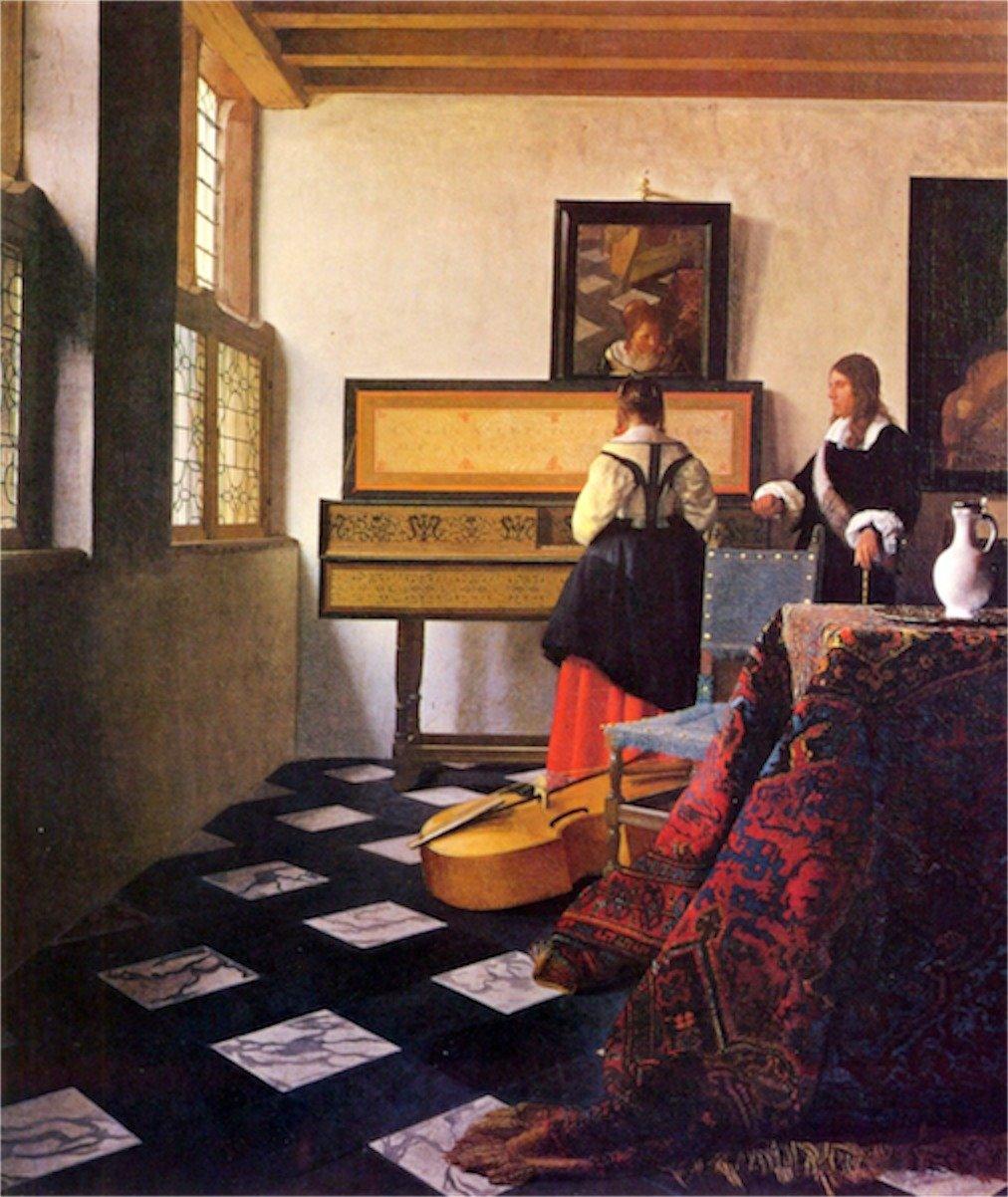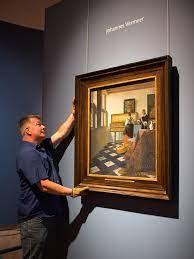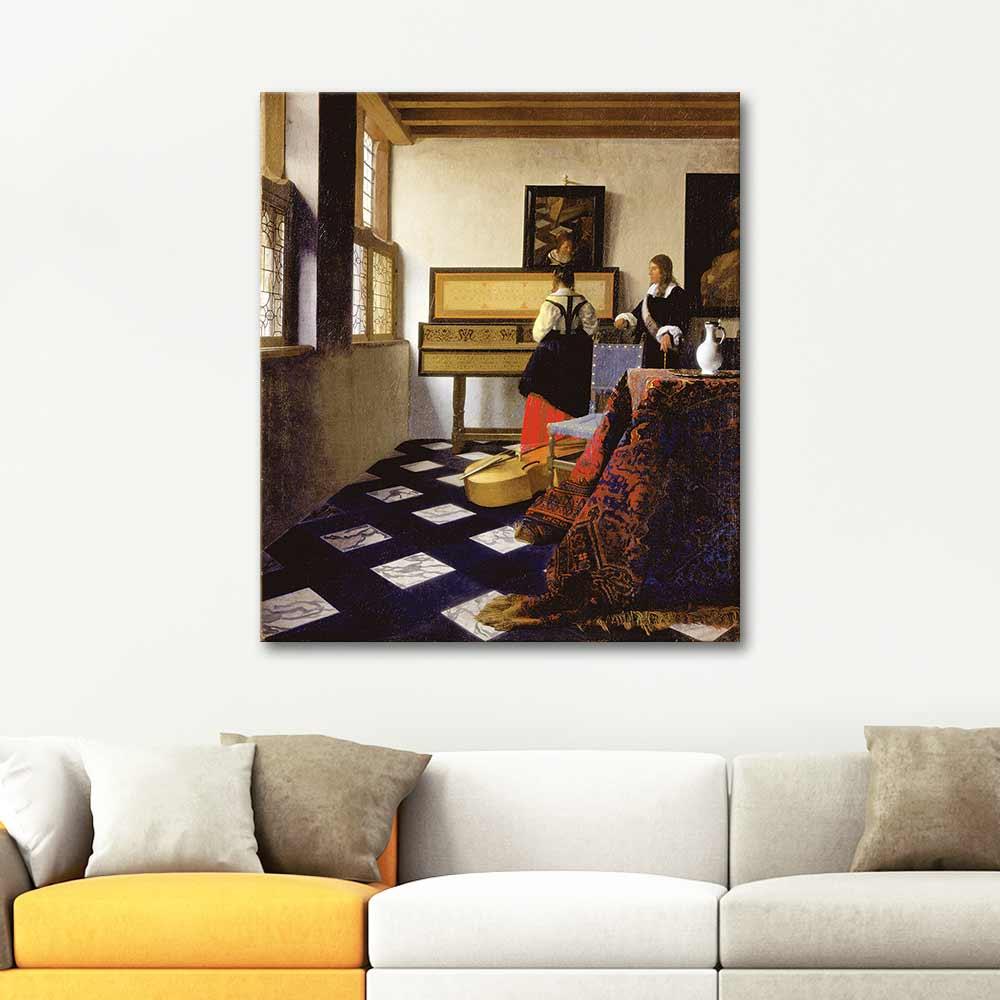Description
Much of Johannes Vermeer's work is filled with secret symbols of sexuality. For example, in "The Music Lesson," the woman in the painting appears to be looking at the keys of a virginal, an instrument associated with feminine purity. But she is actually looking away to meet her instructor's gaze, as she can see in the mirror above her. The wine on the table is also an aphrodisiac, and the stringed instrument on the floor could be seen as a phallic symbol.
The quintessentially flawless Dutch interior of The Music Lesson hardly reflects Vermeer's personal circumstances and may have been largely contrived. It is a well-known fact that luxury items such as rugs, marble floors, silver trays, and musical instruments, all of which appear in the same room, are rarely found in the wealthiest homes. By contrast, none of the common household objects in the artist's posthumous inventory, such as cradles, beds, and shabby furniture, disturbed Vermeer's perfect compositions. Genre interior artists like Vermeer were selective in what they painted.
It is worth knowing that Delft, where Vermeer was born and spent his artistic career, was a busy and prosperous place in the mid-17th century, its wealth based on its prosperous office supply factories, tapestry weaving workshops and breweries.
In general, the density of furniture in Dutch homes must have been much greater than appeared in Vermeer's paintings. Vermeer's perfectly ordered and uncluttered spaces were deliberately arranged and painted to convey an idea of harmony and peace of a refined and elegant life that would have appealed to married couples who hung them in their homes. They are closer to a cinematographic staging than to snapshots of real-life circumstances.
Thus, Vermeer could qualify as a metteur en scène, "putter on stage" (the French title given to a film director), who carefully arranges the sets, props, actors, costumes, and lighting. from his set.
These abstract design principles are generally associated with the 20th century. However, one cannot approach this work without realizing that Vermeer calculated his compositional elements with the same care as Mondrian. The pattern of the ceiling beams, the repetition of black shapes on the back wall, the position of the table, chairs and pitcher have all been carefully planned. Minor adjustments to the shapes of the objects clearly attest to the artist's care for the precision of his composition.
The jug on the table, for example, once had a slimmer neck. Vermeer also adjusted the shape of the harpsichord top to improve composition. The cap is slightly wider to the girl's right than to her left, an alignment change that lessens the tendency to visually connect the two halves of the cap design through the girl.
Similar adjustments occur in at least two other paintings from this period: A Woman Holding a Balance , where he changed the height of the bottom edge of the picture frame, and The Concert , where he adjusted the outline of the harpsichord top as he went.



